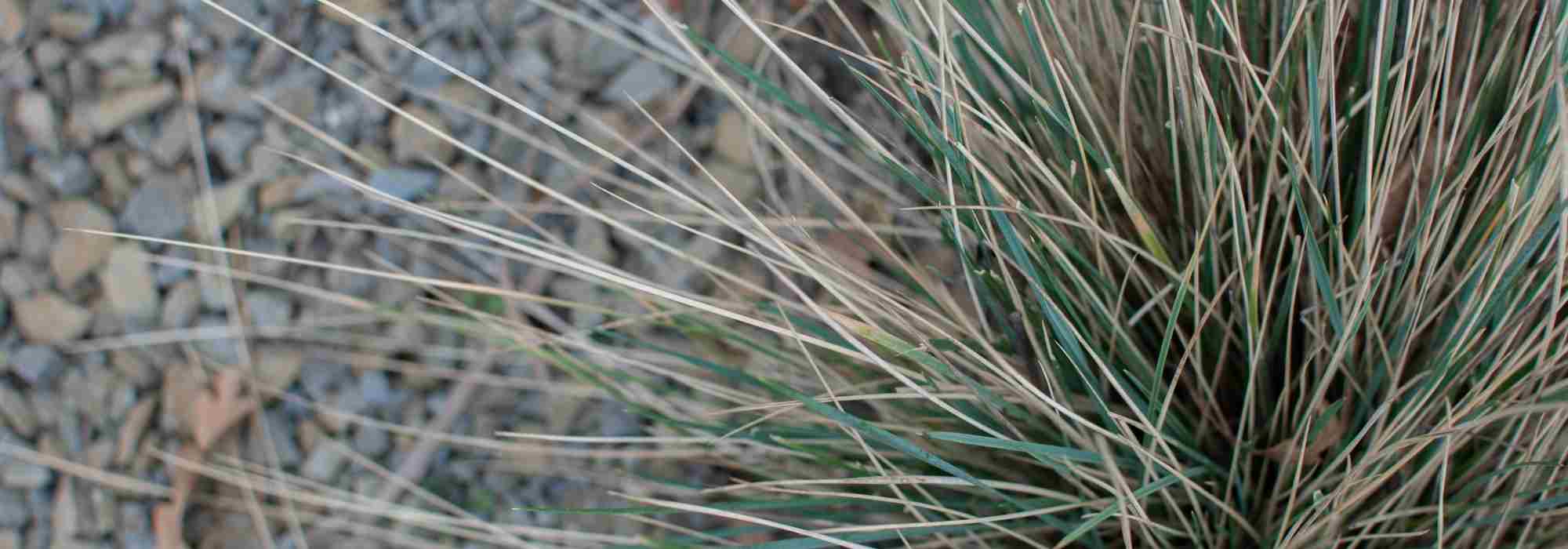
Fescue: 7 ideas for successful plant pairings
Discover our ideas and inspiration
Contents
Fescue is a lovely small ornamental grass prized for its evergreen foliage in shades of green, blue or grey. Festuca glauca ‘Intense Blue’ is the most recent introduction and Festuca ‘Elijah Blue’, a fine improvement on blue fescue. Fescues take various forms: some grow in upright tufts, others form small, plump, turf-forming cushions. They therefore have many uses in the garden: as groundcover, edging, dry rockery, in pots; as a border for lower varieties, in mixed beds for taller ones. With its evergreen leaves, it provides presence in the garden all year round. It finds its place in naturalistic compositions as well as in the cleaner lines of a contemporary garden, lightening bold flowering displays or creating foliage contrast. This little sun- and dry-soil grass pairs easily with other plants equally undemanding and accustomed to drought. With its tousled yet neat habit, it will bring structure, lightness and volume to the driest and most challenging parts of the garden.
Discover which plants to pair it with to create beautiful scenes in the garden!
→ Find out more about Fescues with our complete guide
In a dry rockery
You can mix fescue, for example, with groundcover plants such as the Stachys byzantina, the Senecio cineraria, Artemisia alba, lavender, rosemary, Montpellier soapwort, Erigeron karvinskianus, the Stipa pennata, Thymus capitatus and Gypsophila repense, attractive low-growing plants that enjoy the same warm, sunny conditions and also tolerate summer drought. A golden, luminous variety such as Festuca glauca ‘Golden Toupee’ will be perfect in a rockery to create foliage contrast.
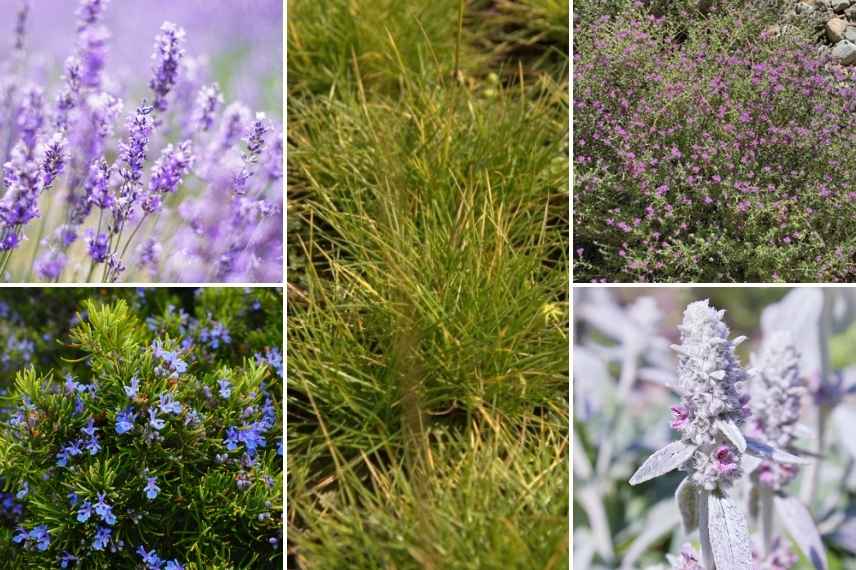
Festuca ‘Golden Toupee’, lavender, rosemary, Thymus capitatus and Stachys byzantina
Read also
9 grasses for dry soilNaturalistic planting
Plant for dry, sunny sites par excellence, Fescue surrounds itself with equally undemanding plants that prefer well-draining soil such as Eryngium, armoises, Agastache, Lavender. Festuca mairei forming a large clump up to 70 cm high will easily find its place in a border. Festuca amethystina, with its pretty bluish tint and lightness, will also bring a very natural feel to borders. Both adapt perfectly to natural-style gardens, alongside yellow achilleas with which they contrast. You can mix fescues with Gauras and Buenos Aires verbenas, a fairly classic but effective combination in a small border. If you have more space, add other grasses such as its elegant cousin, Stipa pennata or Pennisetums.
Planted in small groups, fescues provide a setting for colourful summer flowering of Echinaceas, Heleniums or Kniphofia, offering contrast or tempering overly bright hues.
With their superb metallic-blue foliage, Festuca glauca plants combine beautifully with pastel shades — mauve, pink, white — and look striking planted at base of roses, or surrounded by gypsophilas.
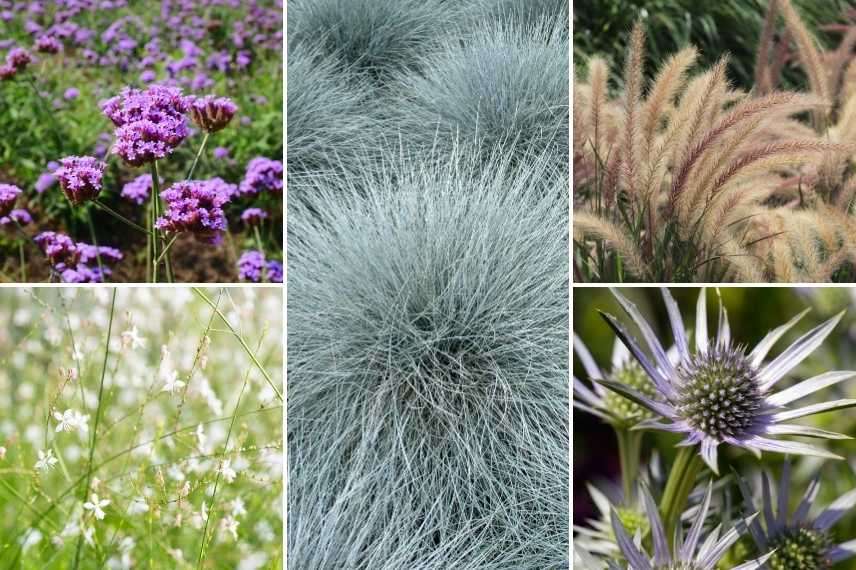
Festuca glauca, Verbena bonariensis, Gaura, Pennisetum, Eryngium
Discover other Fescue grass
View all →Available in 1 sizes
Available in 3 sizes
Available in 2 sizes
Available in 2 sizes
Available in 2 sizes
Available in 2 sizes
Available in 1 sizes
Available in 2 sizes
Available in 1 sizes
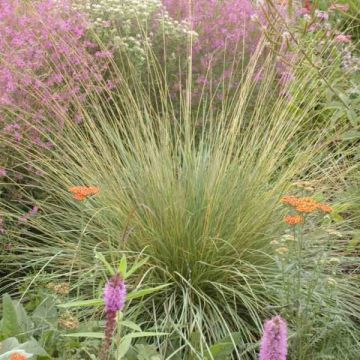
Available in 2 sizes
On edges
Choose compact varieties, such as Festuca valesiaca ‘Glaucantha’ or Festuca ‘Elijah Blue’, their slightly bristly, mat-forming habit making them particularly suited to this use. They form small, very dense, rounded tufts in shades of grey-green to steel-blue. In a border, mix them with fountain grass, Sedum spathulifolium ‘Cape Blanco’, santoline, Dianthus plumarius, Corsican euphorbias (Euphorbia myrsinites). They also form a magnificent pairing with Elymus magellanicus and Stipa tenuifolia and Stipa pennata.
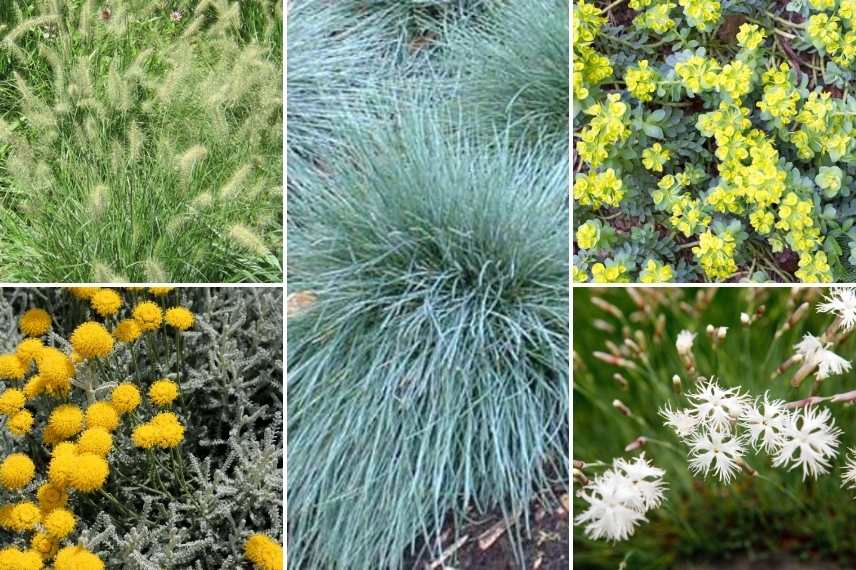
Pennisetum alopecuroides ‘Cassian’, Santoline, Festuca glauca ‘Elijah Blue’, Euphorbia myrsinites, Dianthus plumarius
Read also
Grasses: which variety to choose?In a mineral or dry garden
Fescues fit easily into a dry, mineral-dominated Mediterranean garden. The metallic sheen of their leaves allows blue fescues to be paired with other plants bearing bluish-grey or silvery leaves such as the Stachys byzantina, Senecio cineraria, Cynara cardunculus, santolina, Echinops and Salvia argentea. Also consider creeping rosemary and thymes, laying pale gravel or pumice around your plants. In a scree garden, for a more restrained composition, simply surround them with other grasses such as the Canche flexueuse, Pennisetum and Stipa gigantea.

Thymus, Cynara cardunculus, Festuca valesiaca ‘Glaucantha’, Salvia argentea, Echinops
In a contemporary garden
In a very contemporary spirit, you can create small, very graphic scenes with other plants from dry mediums such as Agaves of medium size, a Helictotrichon sempervirens ‘Pendula’, opuntias, columnar cacti, Stipa barbata and Stipa pennata ssp pulcherrima. For a modern, exotic look, you can also pair it with succulent plants such as Cylindropuntia imbricata. In a contemporary garden, surround the composition with a sea of white pebbles.

Helictotrichon, Cylindropuntia imbricata, Festuca glauca ‘Elijah Blue’, Agave havardiana, Stipa barbata
As a groundcover
Planted in large drifts, some fescues also make good groundcover. Festuca gautieri in particular can even provide an alternative to lawn on dry soil in areas not too heavily trodden, forming pretty little emerald‑green cushions. In solid drifts it forms a thick, dense tapetum, green all year round, limiting proliferation of adventive plants. It can be paired with other vigorous mat‑forming plants such as Achillea crithmifolia, Erigeron karvinskianus, Nepeta x faassenii, Thymus (hirsutus, ciliatus).

Erigerons karvinskianus, Thymus hirsutus, Festuca gautieri, Nepeta faassenii, Achillea crithmifolia
Potted
In pots, a few clumps of fescues help lighten certain flower compositions when paired with small lavenders, penstemons, a sowing of Californian poppies, or better with Osteospermums and Sedum cauticola ‘Lidakense’. A clump of fescue can fill the base of a small palm such as Chamaerops humilis ‘Compacta’ (var. compacta) or Chamaerops humilis var. cerifera with bluish foliage, or even a Vatricania guentheri or candelabra cactus.
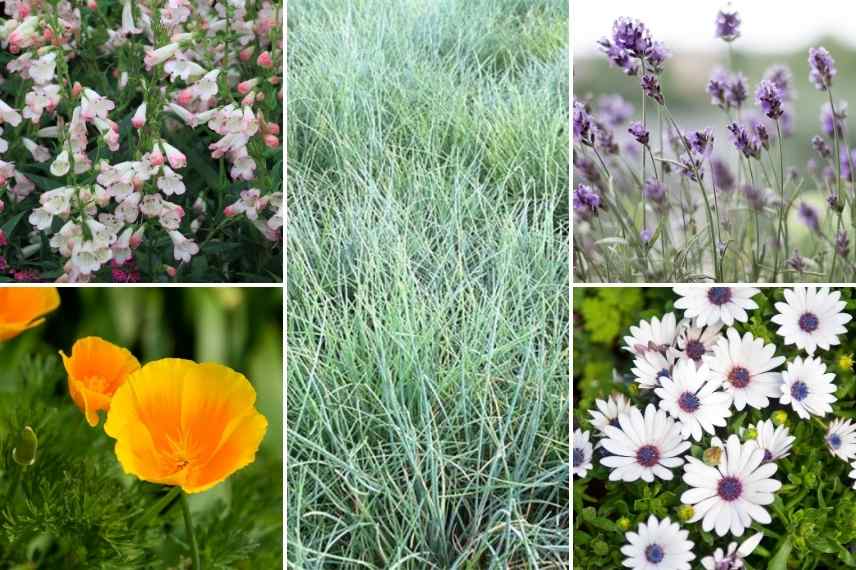
Penstemons, Californian poppy, Festuca valesiaca ‘Glaucantha’, lavender, Osteospermums
- Subscribe!
- Contents
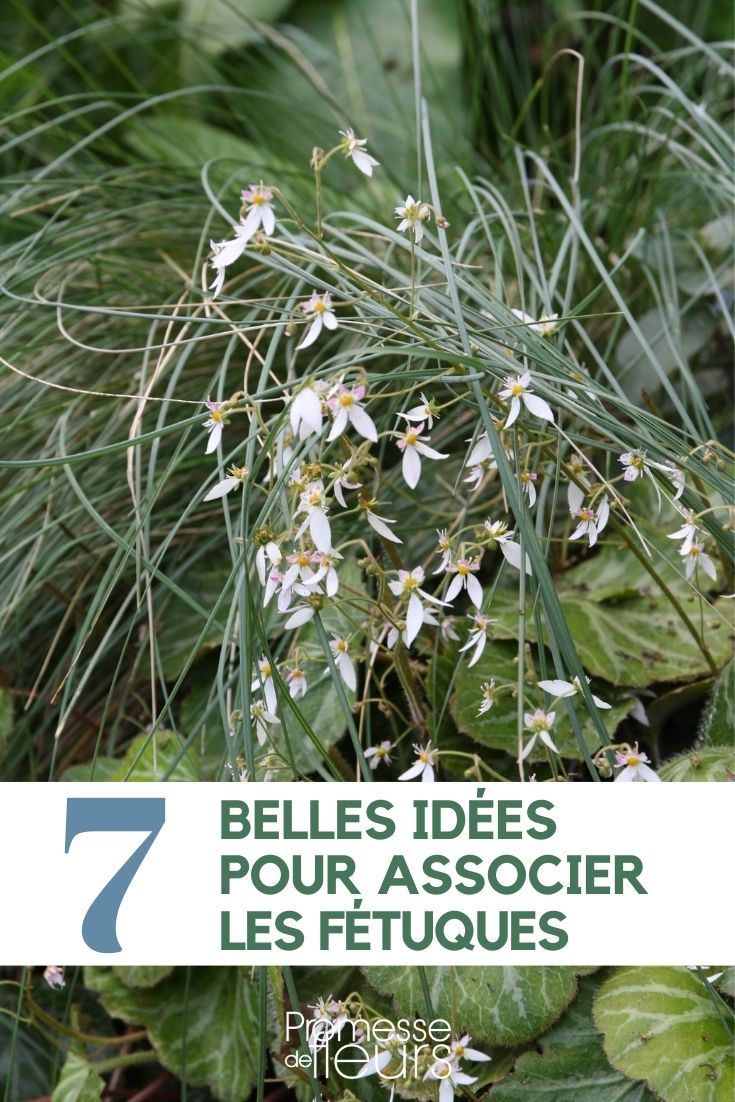































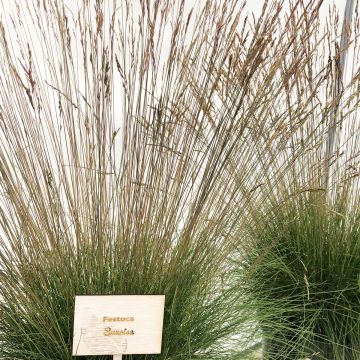
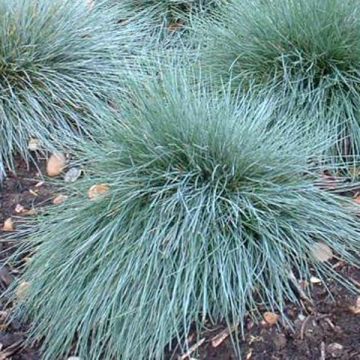
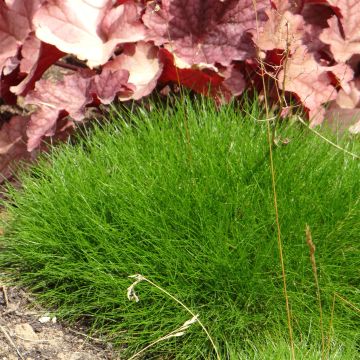
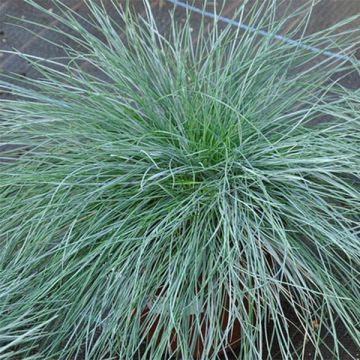
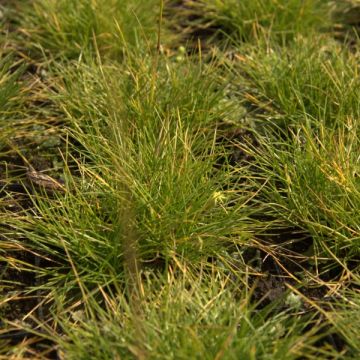
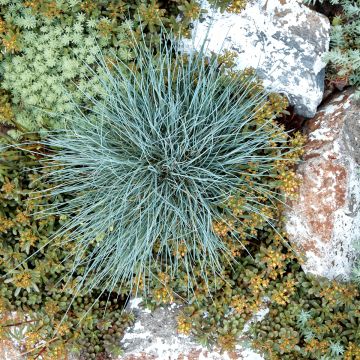
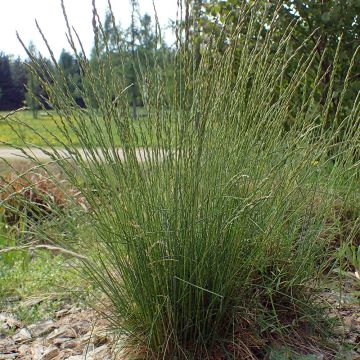
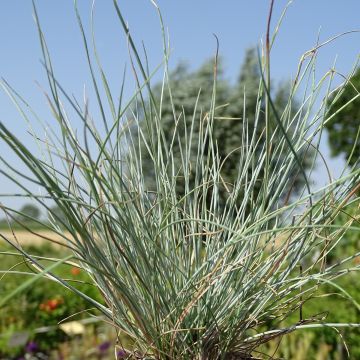
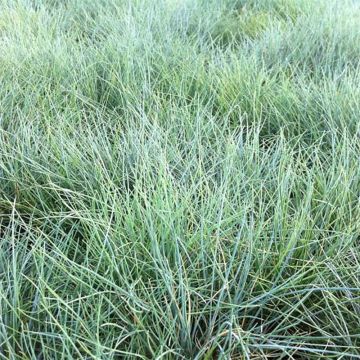
Comments